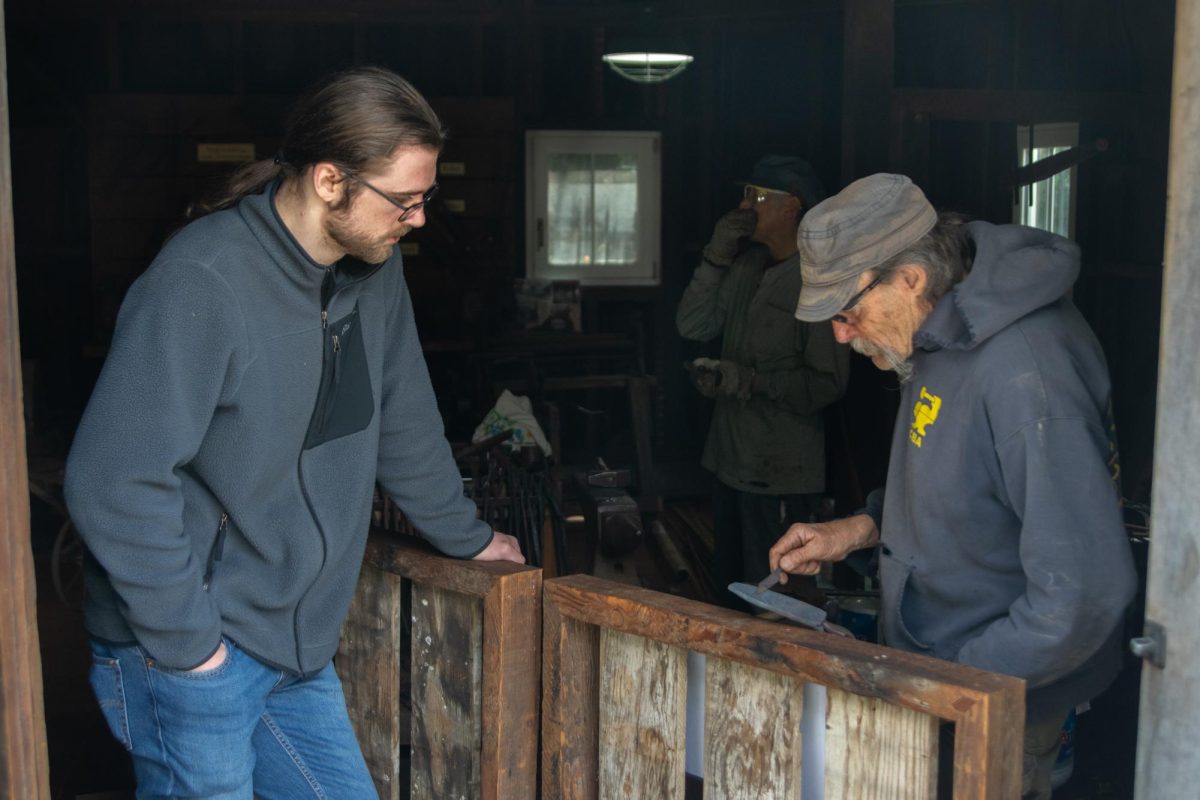 Piano, violin, trumpet, cello — these are the instruments we typically hear of as we walk down the halls of MVHS. But the students of MVHS, a mixture of many different cultural and ethnic groups, bring more to the table than just these few instruments. Three students who play unique instruments discuss how their music has brought them closer to their cultures.
Piano, violin, trumpet, cello — these are the instruments we typically hear of as we walk down the halls of MVHS. But the students of MVHS, a mixture of many different cultural and ethnic groups, bring more to the table than just these few instruments. Three students who play unique instruments discuss how their music has brought them closer to their cultures.
Living in harmonium
Ever since she was four, sophomore Anoop Kaur has played the vaja, also known as the harmonium. The vaja is traditionally played during Sikh worship services, in which religious shabbads (songs) are sung along to the melody of the vaja. It resembles a small piano, but instead of pumping the pedals with one’s feet, the pedals are pumped with their hands on the back of the harmonium, while sitting on the ground. 
Even though Kaur initially didn’t want to play the vaja, and, as she puts it, would rather be “doing normal things,” the vaja has grown on her and become a very important part of her life. It has strengthened her connection to her Indian culture and religion.“When I played the harmonium, I didn’t only play the shabbads,” Kaur said. “I learned about the past priests, and how they played, and how they sacrificed their whole lives for our religion.”
Although Kaur was also introduced to the piano at a young age, she decided that she only wanted to focus on one instrument so that she could achieve full mastery. She ultimately made the decision to quit piano because she felt a closer connection to the vaja.
“By playing the piano, I felt like I was getting distant [from my culture] and the piano was foreign to me, so I just chose the harmonium,” Kaur said. “I feel like with an ethnic instrument, you can gain a special connectivity and it opens more doors for you.”
Not out of touch
Although born to immigrant parents, senior Julianna Xie considers herself very Americanized. However, this doesn’t mean that she’s out of touch with her Chinese heritage. From the time she was six or seven years old, she’s played the gu zheng (Chinese zither). It was her neighbor who first taught her to play.
“My neighbor was actually a guzheng teacher, and one night when we were going trick-or-treating for Halloween, my mom struck up a conversation with her,” Xie said. “She said, ‘I would like my daughter to learn this instrument.’”
With its many strings, the gu zheng is similar to a harp. However, it’s played horizontally and has 21 strings instead.
 Not surprisingly, the instrument has a Chinese origin. “Gu” is the Chinese character that means old, and “zheng” represents an onomatopoeia for the sound that the instrument makes. Many of its songs are based on Chinese folklore and history. So playing the gu zheng also gives Xie exposure to Chinese heritage.
Not surprisingly, the instrument has a Chinese origin. “Gu” is the Chinese character that means old, and “zheng” represents an onomatopoeia for the sound that the instrument makes. Many of its songs are based on Chinese folklore and history. So playing the gu zheng also gives Xie exposure to Chinese heritage.
“Right now I’m playing a song based off a true story about two shepherds who were sisters,” Xie said. “This huge snowstorm came, and they risked their lives to save the sheep. They were revered by the government as model citizens because they were able to sacrifice themselves for the good of the government’s sheep. It was kind of funny.”
The story itself is often reflected in the song through changes in tempo, volume, or harmony (or lack thereof).
“During the storm, the music is very chaotic and aggressive,” Xie said. “It’s very loud, there are a lot of notes that don’t really go together, so it’s kind of a creepy noise. But the calm after the storm is really clear as well because all the nice melodies come out then.”
Not only does playing the guzheng bring Xie closer to her Chinese heritage, it also brings her closer to her parents, bridging the generational and cultural gap between them.
“It gives me and my parents something to bond over,” Xie said. “They moved here when they were thirty, so they’re not that Americanized. I feel like I’m very Americanized, but then we can bond over gu zheng.”
Destressing with ukulele
Junior Cindy Chang started playing the ukulele a year ago, before she moved to the U.S. She was one of many in Taiwan who had picked up the instrument after a famous singer called Fish Leong used it to perform her song, “Small Hand Holding Big Hand,” in a music video. The song was originally an anime theme song, but the singer had translated it from its original Japanese to Chinese.
The ukulele had become so popular in Taiwan that by the time Chang started middle school, a club had been dedicated to the instrument. Because of popular demand, the school had even hired a teacher specifically to teach students how to play the ukulele. But its widespread popularity caused some unexpected results.
“All of a sudden, this ukulele club was more famous than the orchestra,” Chang said. “In the end, the orchestra couldn’t find enough people because everyone had gone to learn the ukulele, a very simple instrument.”
Because of its sudden surge in popularity, both Chang and her sister were interested in learning to play the ukulele. They started taking classes together with much younger students to further their interest. Discovering that it was a simple instrument to learn to play, Chang began to move beyond the class, teaching herself and searching for songs she could practice.
However, since she has moved to the U.S., she has spent less and less time playing her ukulele, as her workload and continued to increase. At the time, though, the ukulele was a way for Chang to relax and let go of all the stress she had from studying all the time in Taiwan.
Chang said, “[Playing] the ukulele was very relaxing, and [since] I could play with my younger sister, that made me happy.”







